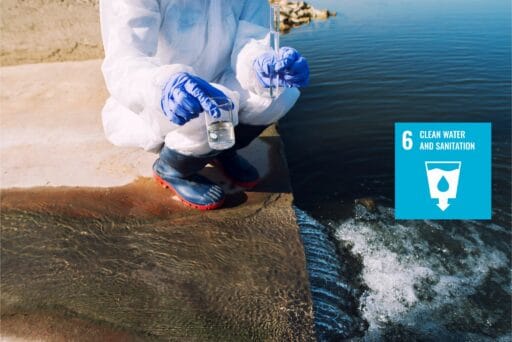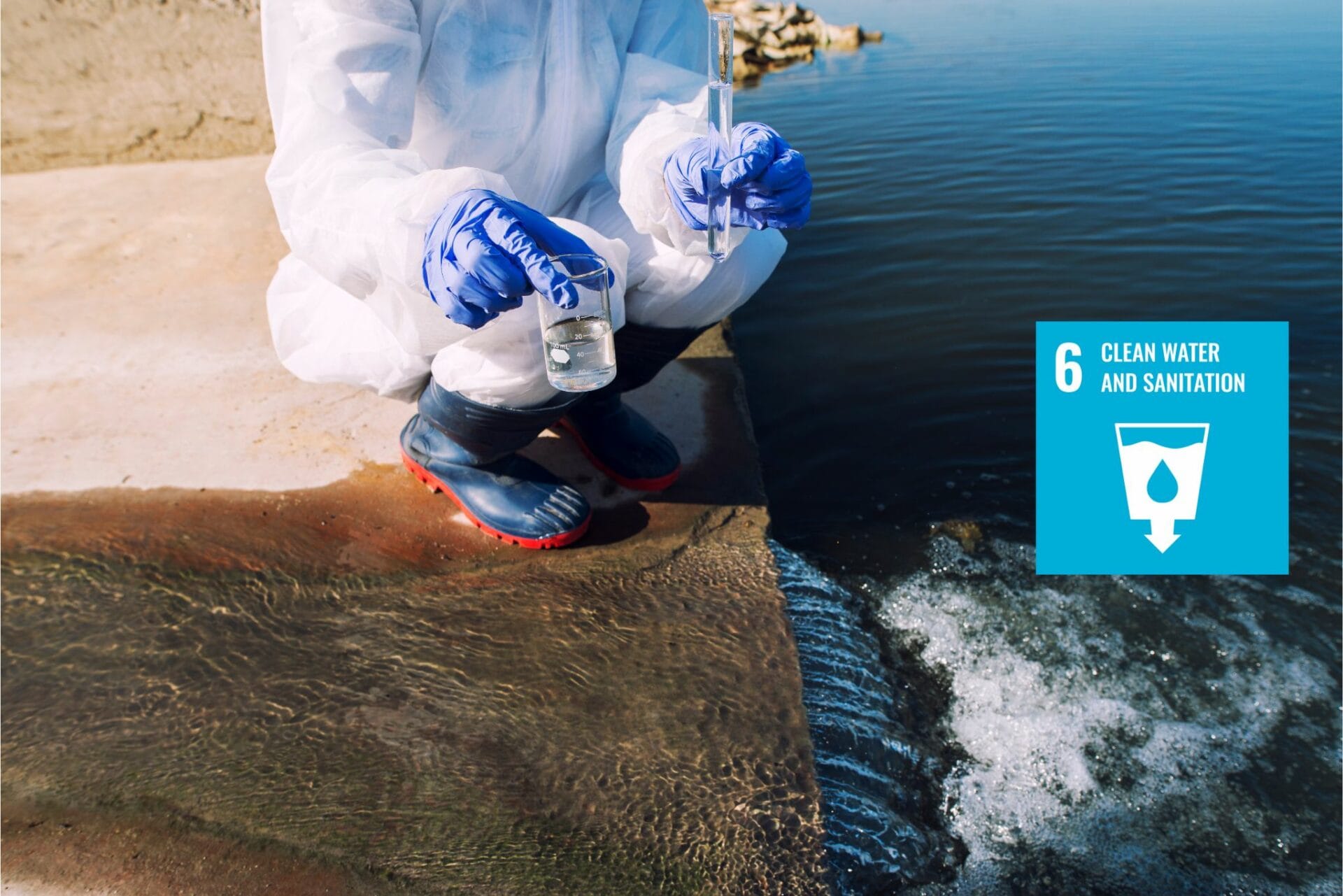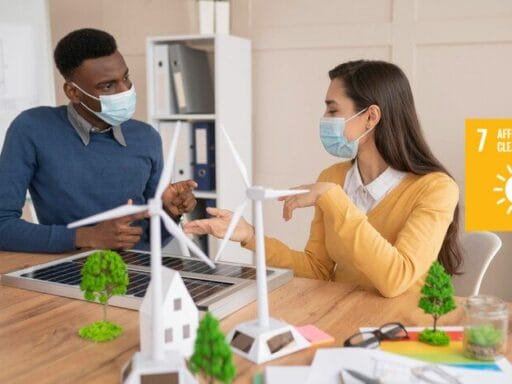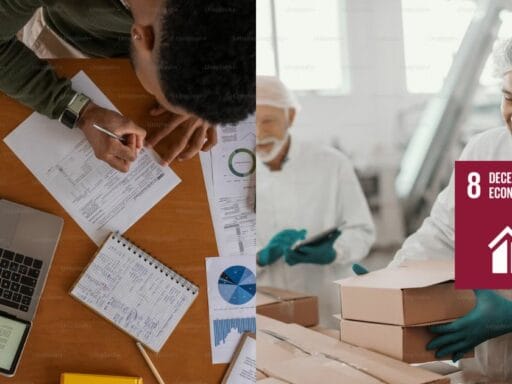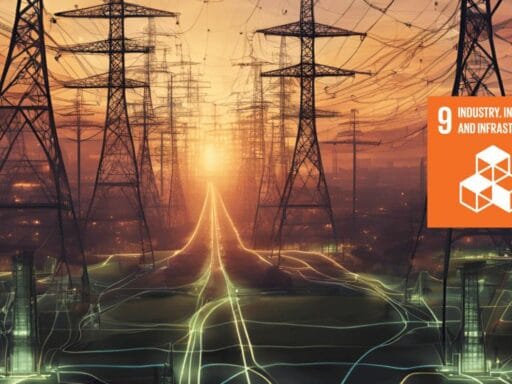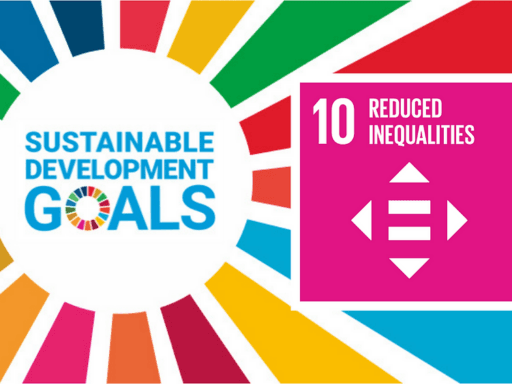Access to clean water and good sanitation is a fundamental human right, yet millions of people worldwide still lack these basic essentials. SDG Goal 6 of the United Nations’ Sustainable Development Goals (SDGs) is to guarantee the availability and sustainable management of water and sanitation for everyone by 2030. Achieving this aim will not only save lives, but will also benefit general health, well-being, and economic development. SDG Goal 6 was intended to solve the world’s water and sanitation crises. Despite substantial improvements in recent decades, billions of people continue to lack access to clean drinking water, sanitation, and hygiene services. According to the United Nations, 2.2 billion people lack access to adequate drinking water, while 4.2 billion lack acceptable sanitation facilities. The consequences of this are severe, affecting health, education, and economic growth.
SDG Goal 6 entails more than simply ensuring access to water and sanitation. It also covers wider issues of water management, such as water quality, water usage efficiency, wastewater treatment, and ecosystem restoration. These components are essential for ensuring that water resources are managed sustainably and fairly.
The Importance of SDG Goal 6
Water is a vital resource that affects many aspects of human life. The significance of SDG Goal 6 cannot be emphasized, since access to clean water and sanitation is critical for:
- Health and wellbeing: Clean water is critical for avoiding waterborne infections, which cause millions of lives each year, especially in impoverished nations. Access to good sanitary facilities also helps to prevent the spread of disease.
- Economic growth: Water shortages and inadequate sanitation systems impede economic growth. Farmers require stable water sources to cultivate crops, while companies rely on water for manufacturing. Communities may overcome poverty by boosting access to clean water.
- Education: In many underdeveloped nations, children, particularly girls, are frequently entrusted with gathering water for their family, devoting time away from their studies. Providing access to clean water and sanitation allows more children to attend school.
- Environmental sustainability: Proper water resource management contributes to the protection of ecosystems and biodiversity. When water is correctly managed, it benefits food production, industry, and the environment, promoting long-term sustainability.
Targets and Indicators of SDG Goal 6
SDG Goal 6 includes a number of specific objectives aimed at providing clean water and sanitation to all by 2030. One of the primary goals is to provide universal and equal access to clean and inexpensive drinking water for everybody. This entails ensuring that all populations, especially those in underserved or rural regions, have consistent access to clean water. It also entails emphasis on cost, ensuring that even the poorest communities do not miss out on crucial water services. This is measured by the percentage of the population that uses securely managed drinking water services, as well as the existence of water pollution.
The second important goal is to ensure that everyone has appropriate and equitable sanitation and hygiene. This involves eliminating open defecation, which is a major difficulty in many underdeveloped nations. Achieving this goal is critical for maintaining public health, particularly for women and girls, who frequently suffer safety and dignity problems due to poor sanitation. This target’s indicators include the proportion of the population that has access to clean sanitation services and hygiene facilities such as handwashing stations.
Another significant aim of SDG Goal 6 is to enhance water quality, reduce pollution, and increase water efficiency across all sectors, including agriculture, industry, and homes. This is crucial for avoiding water shortages and ensuring that future generations can satisfy their water requirements. This target’s indicators include monitoring water-related ecosystems, wastewater treatment rates, and the percentage of untreated wastewater released into bodies of water. These aims and indicators, taken together, contribute to the proper tracking of progress toward sustainable water and sanitation services.
Challenges in Achieving SDG Goal 6
Achieving SDG Goal 6 comes with several challenges, particularly in developing countries where infrastructure and governance are lacking. Some of the key challenges include:
- Water Scarcity: Many regions, especially in arid climates, face severe water shortages. Climate change has exacerbated this issue, making it difficult for communities to access reliable water sources.
- Lack of Infrastructure: Developing countries often lack the necessary infrastructure for water and sanitation services. This includes water treatment plants, sewage systems, and sanitation facilities.
- Pollution: Industrial waste, agricultural runoff, and untreated sewage continue to pollute water bodies, making it difficult to ensure clean water for all.
- Funding: Achieving SDG Goal 6 requires substantial financial resources. Many countries struggle to secure the necessary funding for water and sanitation projects.
- Political Will: Achieving SDG Goal 6 requires strong political will and governance structures that prioritize water and sanitation issues.
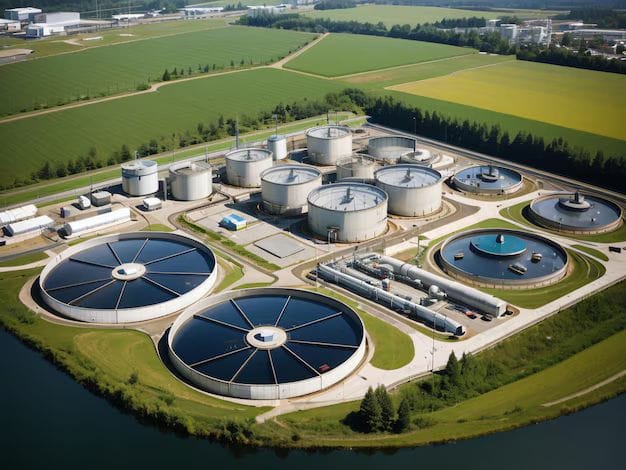
Case Study: Singapore’s Water Management System
Singapore is an excellent example of a country that has effectively implemented sustainable water management strategies. Despite its limited natural freshwater resources, Singapore has created a sophisticated and creative water management system known as the “Four National Taps” approach. This method includes:
- Water Importation: Singapore imports water from neighboring Malaysia under the Johor River Agreement.
- Water Recycling (NEWater): The government has invested in water reclamation plants that process wastewater and create safe drinking water. NEWater presently supplies up to 40% of Singapore’s water consumption.
- Desalination: Singapore has installed desalination units to transform saltwater into freshwater. This technique enables Singapore to diversify its water supply sources.
- Rainwater Harvesting: The country’s large network of sewers, canals, and reservoirs gathers rainwater, which is subsequently processed and used.
Singapore has been able to lessen its reliance on imported water by taking a multidimensional strategy and developing a sustainable water infrastructure that serves the demands of its population.
Case Study: The Nairobi Water Project
In Nairobi, Kenya, the difficulty of providing clean water to the urban poor has been a major concern. The Nairobi Water Project, spearheaded by Nairobi City Water and Sewerage Company (NCWSC) in collaboration with the government and other organizations, sought to increase water access in informal settlements. Over half of the city’s population lives in these regions, and many of them do not have access to clean water or sanitary facilities.
The initiative addressed SDG Goal 6 by using a multifaceted strategy that included upgrading infrastructure, constructing public water kiosks, and minimizing water theft. Community members helped develop and maintain the water distribution system, instilling a feeling of ownership and responsibility. The initiative also aimed to improve the financial viability of water systems, providing cheap pricing for low-income neighborhoods while preserving service quality.
The Nairobi Water Project exemplifies the value of collaboration and community involvement in meeting SDG Goal 6: Clean Water and Sanitation. It highlights how local governments, the business sector, and international organizations may work together to alleviate urban water emergencies and improve the living conditions of vulnerable communities. The initiative’s effectiveness is evaluated by fewer waterborne illnesses, better cleanliness, and more access to potable water in Nairobi’s poorest neighborhoods.
FAQs
🤔 What is SDG Goal 6?
Answer: SDG Goal 6 aims to ensure the availability and sustainable management of water and sanitation for all by 2030.
🤔 Why is clean water and sanitation important?
Answer: Clean water and sanitation are critical to human health, economic development, education, and environmental sustainability. Access to these services slows the spread of disease and promotes general health.
🤔 What are the targets of SDG Goal 6?
Answer: SDG Goal 6 aims to provide universal access to clean drinking water and sanitation, improve water quality, increase water-use efficiency, and safeguard water-related ecosystems.
🤔 What are the challenges in achieving SDG Goal 6?
Answer: Some of the problems are water shortages, pollution, a lack of infrastructure, money, and political will. These difficulties are particularly widespread in underdeveloped nations.
🤔 How can businesses and organizations contribute to SDG Goal 6?
Answer: Businesses may help by implementing sustainable water management techniques, minimizing water waste in their businesses, and funding community water initiatives.
Conclusion
SDG Goal 6: Clean Water and Sanitation is critical to establishing a sustainable future. Communities that lack access to clean water and sanitation face health issues, limited educational possibilities, and hampered economic growth. The hurdles to reaching this aim are substantial, but the rewards are enormous, affecting every aspect of society. Countries such as Singapore show that with inventive solutions and strong political will, even water-scarce regions can develop long-term water management systems. Working together—through government policy, business accountability, and community engagement—we can guarantee that everyone has access to clean water and sanitation, bringing us closer to a healthier, more equitable future.


